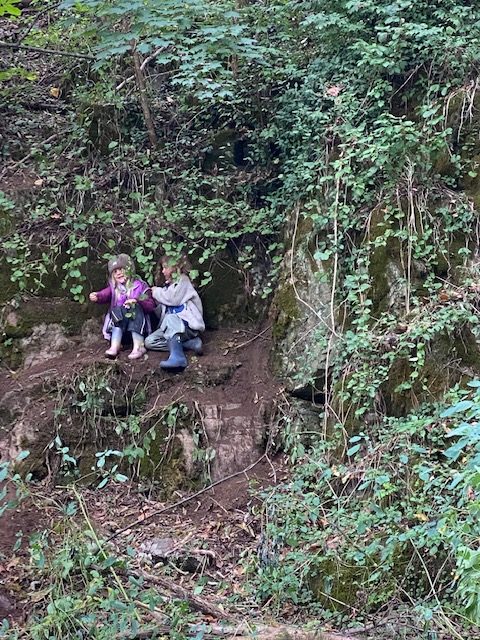Written by Bluebell Kindergarten teacher, Kerry Clements.

Several years ago while on the playground with my kindergarten class, I was chatting with another teacher who was new to the school and to Waldorf education. She was watching with curiosity as the students ran full speed, chasing each other with delight. Before joining our community her background and experience had been mostly in the public schools. She turned to me and asked, “Are the parents really okay with this? Running, chasing, climbing trees? It seems risky.” I answered her with, “Yes, there is some amount of risk, but the benefits far outweigh the risks.”
Risky play, forest play, rough and tumble play. Why do we support and make space for this type of play? What are the children learning and how does it serve them?
“Adventurous, child-initiated play is full of opportunities for developing creativity, invention, resilience, and problem solving.” – Joan Almon, The Value of Risk in Children’s Play



When we allow children to engage in risky play, play that involves heights, high speeds, rough and tumble play and “disappearing” play, we give children the opportunity to grow and develop, physically, emotionally and cognitively. Forest play and tree climbing are great examples of play that help children build body awareness, coordination and balance. When a child is testing a branch, jumping from a tree or playing alongside the river, they are assessing risk and problem solving. They are also developing self-knowledge and self trust through every experience of success. It is such a joy to watch a child in their first attempt to climb a tree. Timid and unsure, moving slowly, assessing with each step if they are safe. With each branch their confidence soars until they exclaim with excitement, “I did it, did you see me!?” And with each fall our children also build resiliency.
“By NOT allowing a child to take risk, we’re actually creating a child that is more unsafe.” -Angela Hanscom, Balanced and Barefoot: How Unrestricted Outdoor Play Makes for Strong, Confident, and Capable Children
But risky play is risky, or else they wouldn’t call it risky play. How do we, as teachers, parents and caregivers make space for this type of play? What tools can we give to our young ones to help them in their discovery of themselves and the world? One of the most important aspects to consider is our presence and our language. “Be careful” is one of the most common phrases we utter to young children and, unfortunately, it carries very little meaning and offers no guidance. So what can we say instead?
Here are some great ideas from BackWoodsMama.com on what to say instead of “be careful”:

Risky play is an essential component of child development. It builds cognitive skills, fine and gross motor skills and spatial awareness. Children are learning risk assessment through climbing trees, balancing on rocks and logs and running down hills. They are building confidence and knowledge of their bodies and of their capacities that will serve them for a lifetime.
